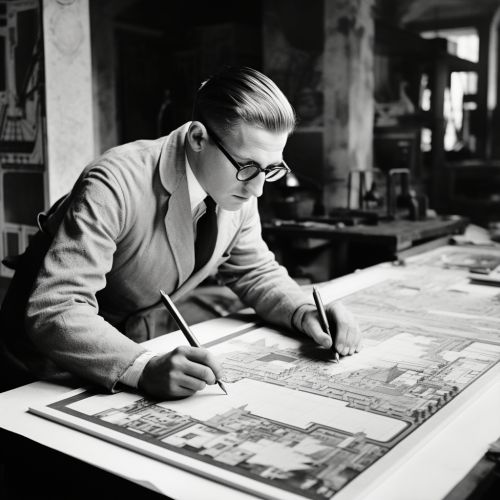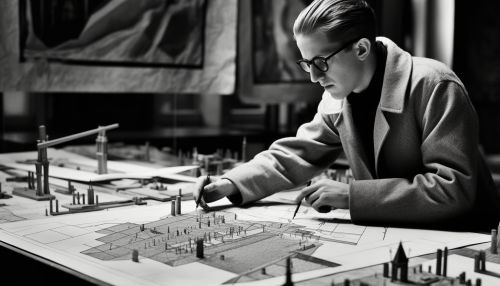Le Corbusier
Early Life
Charles-Édouard Jeanneret, known as Le Corbusier, was born on October 6, 1887, in La Chaux-de-Fonds, a small city in the French-speaking part of Switzerland. His father, Georges Edouard Jeanneret, was a watch engraver and enameller, and his mother, Marie Charlotte Amélie Jeanneret-Perréard, was a musician and piano teacher.
Education
Le Corbusier's early education was focused on the visual arts, particularly engraving, which was a traditional industry in his hometown. He attended the Art School of La Chaux-de-Fonds, where he was taught by Charles L'Eplattenier, an artist and teacher who had a significant influence on his early life. L'Eplattenier insisted that his students observe nature and interpret it through their own personal vision, a philosophy that Le Corbusier later incorporated into his own architectural designs.


Early Career
In 1907, Le Corbusier travelled to Paris and found work in the office of Auguste Perret, a pioneer in the use of reinforced concrete. This experience had a profound influence on Le Corbusier's understanding of the structural and design possibilities of concrete. In 1910, he travelled to Germany to work with Peter Behrens, where he was exposed to the industrial design movement.
Architectural Philosophy
Le Corbusier's architectural philosophy was encapsulated in his Five Points of Architecture, which he formulated in the 1920s. These points included the use of pilotis (reinforced concrete columns), a free facade, an open floor plan, ribbon windows, and a roof garden. These principles were intended to create a new architectural language that responded to the needs and realities of the modern age.
Major Works
Le Corbusier's major works include the Villa Savoye in Poissy, France; the Unité d'Habitation in Marseille, France; the Chapel of Notre-Dame du Haut in Ronchamp, France; the city plan for Chandigarh, India; and the Carpenter Center for the Visual Arts at Harvard University in the United States.
Later Life and Death
In his later life, Le Corbusier continued to design and build, but also focused on writing and teaching. He died on August 27, 1965, while swimming in the Mediterranean Sea near his home in Roquebrune-Cap-Martin, France.
Legacy
Le Corbusier's influence on the field of architecture is immeasurable. His innovative designs and theories continue to be studied and applied in architectural practices around the world. His work has also been recognized by various institutions, including the UNESCO, which has designated several of his buildings as World Heritage Sites.
